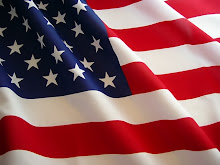Although released nine years before the September 11th terrorist attacks, the film premiered just one year after the end of the Gulf War, and thus the rhetoric for framing people of the Middle East as the enemy was already engraved in the minds of the American people. The film’s setting, Agrabah, is largely based off of Baghdad, and in fact, was rumored to originally be set in Baghdad, but later changed due to the Gulf War.The opening song of the film, “Arabian Nights,” originally contained the lyrics “Where they cut off your ear if they don't like your face/It's barbaric, but, hey, it's home.” However, due to protests from the American-Arab Anti-Discrimination Committee, in July 1993 the lyrics were changed to the less offensive, “Where it's flat and immense and the heat is intense/It's barbaric, but, hey, it's home."Regardless of the change in lyrics, the link between the Middle East and barbarianism remains, drawing from the dominant “us vs. them” ideology that claims Arab/Muslim cultures are inferior and backwards.
Stereotypes about Middle Easterners are further reinforced through the physical appearance and language of the characters of the film. To begin with, the character of Aladdin was drawn to resemble actors Michael J. Fox and Tom Cruise, who are both of European descent. Similarly, Princess Jasmine also has very Anglo-Saxon features and does not wear a veil typical of the time period in which the movie is set (although that time period is debated). On the other hand, the “bad guys” of the story, the most obvious of which is Jafar, are characterized by darker skin, eyebrows, and mustaches and are usually
 wearing turbans. Furthermore, they speak in thick accents that are noticeably different from the Midwestern American accents of Jasmine and Aladdin. This distinction between the heroes and the villains of the film directly play into the good Muslim/bad Muslim dichotomy prevalent in American media. Author Mahmood Mamdani argues that “good Muslims” are constructed as secular, modern, and Westernized, while “bad Muslims” are the direct opposite—barbaric, fanatical, and ultimately evil. As Alsultany concludes, the media, even children’s movies like Aladdin, has used the good versus bad Muslim ideology in order to avoid appearing racist towards all Muslims while simultaneously requiring Muslims to be understood in the framework of the War on Terror.
wearing turbans. Furthermore, they speak in thick accents that are noticeably different from the Midwestern American accents of Jasmine and Aladdin. This distinction between the heroes and the villains of the film directly play into the good Muslim/bad Muslim dichotomy prevalent in American media. Author Mahmood Mamdani argues that “good Muslims” are constructed as secular, modern, and Westernized, while “bad Muslims” are the direct opposite—barbaric, fanatical, and ultimately evil. As Alsultany concludes, the media, even children’s movies like Aladdin, has used the good versus bad Muslim ideology in order to avoid appearing racist towards all Muslims while simultaneously requiring Muslims to be understood in the framework of the War on Terror.


No comments:
Post a Comment